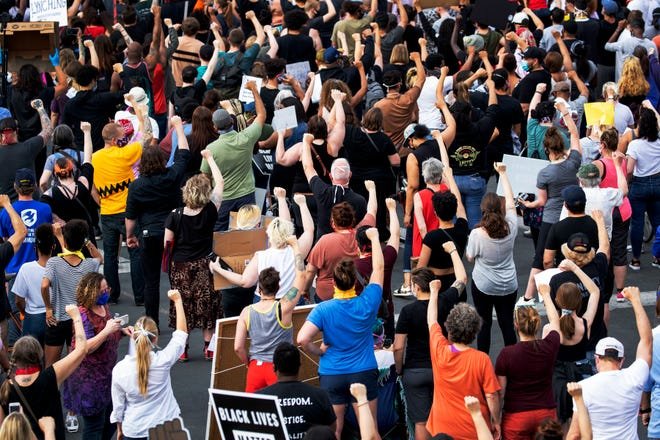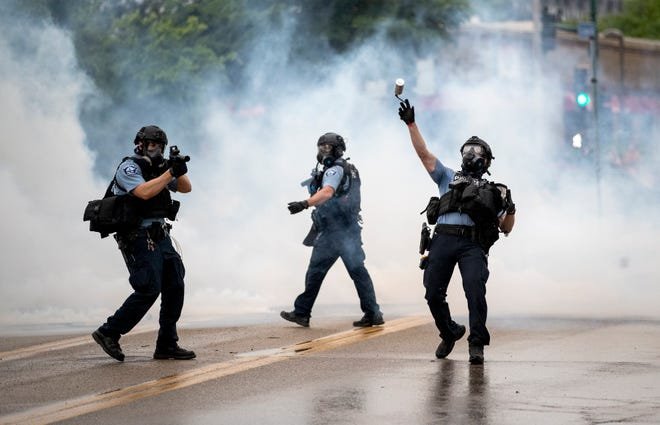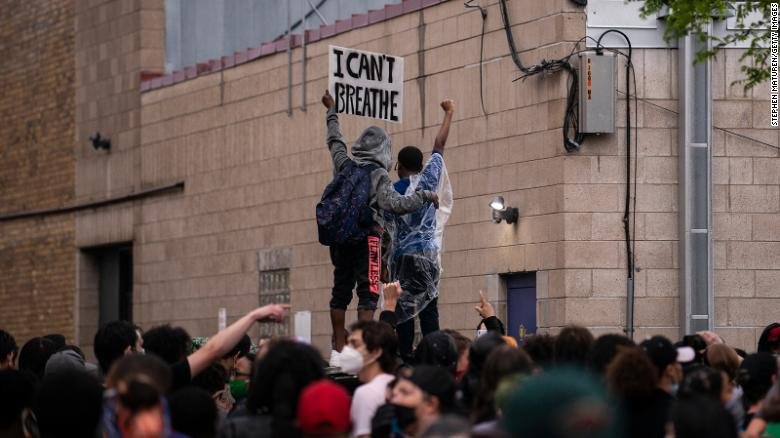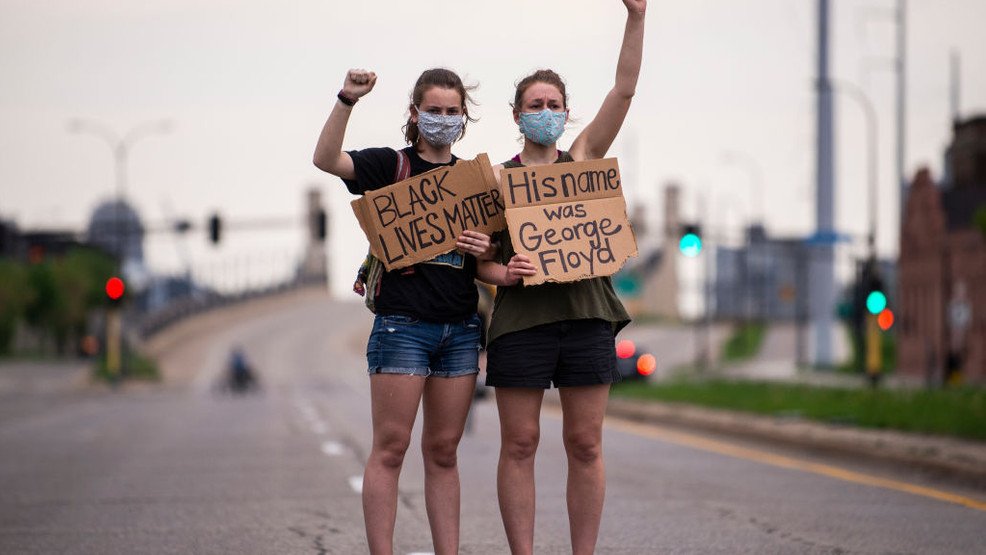Hundreds of protesters packed the streets of Minneapolis and at the intersection where Floyd was pinned to the ground by police officers shortly before he died.
Floyd’s death on Monday night after a struggle with officers is under investigation by the FBI and state agents.
Four police officers involved in the incident were fired Tuesday, Minneapolis police said. State and federal authorities are now investigating the case.
Minneapolis Mayor Jacob Frey apologized to the black community in a post on his Facebook page.
“Being Black in America should not be a death sentence. For five minutes, we watched a white officer press his knee into a Black man’s neck. Five minutes. When you hear someone calling for help, you’re supposed to help. This officer failed in the most basic, human sense,”.
Tuesday evening, protests started at the intersection where Floyd was last recorded alive. Protesters later moved to one of the police precincts.
Some demonstrators chanted “No justice, no peace” — as well as “I can’t breathe,” which were some of the last words Floyd uttered Monday in the bystander video.
Demonstrators and officers in riot gear faced each other in tense moments, and police sent tear gas canisters into crowds.
Carlos Gonzalez, Star Tribune via AP
“We’re here to let them know this can’t be tolerated, there will be severe consequences if they continue to kill us. This will not go on another day,” a protester told the affiliate.
Carlos Gonzalez, Star Tribune via AP
Some demonstrators wheeled a shopping cart full of rocks just outside the precinct and dumped the rocks on the ground for people to throw, a CNN team there reported.
Carlos Gonzalez, Star Tribune via AP
A police cruiser’s back window was shattered when someone threw something at it. Police outside Minneapolis Police Department’s 3rd Precinct fired what appeared to CNN’s team on the scene to be non-lethal projectiles at demonstrators.
Officers fired “foam marking rounds,” but no rubber bullets, after some protesters became unruly, said Minneapolis police spokesman John Elder.
Those rounds are meant to mark individuals that officers believe may be instigating violence for later investigation, said Elder.
Minneapolis police said, on Monday evening officers responded to a call about an alleged forgery in progress. Police said Floyd matched the description of a suspect and was arrested. Video from bystanders shows Floyd handcuffed and pinned to the ground and one police officer’s knee pressing against his neck and ignoring his pleas. Floyd pleaded he was in pain and couldn’t breathe.
Image: Courtesy of CNN
After several minutes, one of the officers tells Floyd to “relax.” “Man, I can’t breathe,” he responds. Minutes pass and the man becomes motionless under the officer’s restraint. The officer leaves his knee on Floyd’s neck for several minutes more. Shortly after, he died at a nearby hospital.
Carlos Gonzalez, Star Tribune via AP
Several witnesses had gathered on a nearby sidewalk, with some recording on their phones. Bystanders became increasing agitated as Floyd pleaded with police. One bystander tells officers that they need to let him breathe. Another yelled at the officers to check the man’s pulse.
In Minneapolis, kneeling on a suspect’s neck is allowed under the department’s use-of-force policy for officers who have received training in how to compress a neck without applying direct pressure to the airway. It is considered a “non-deadly force option,” according to the department’s policy handbook.
All body camera footage has been turned over to the Minnesota Bureau of Criminal Apprehension, and the agency asked to speak with anyone who saw the arrest or recorded video. The officers were initially put on paid administrative leave, per department protocol. The agency said the officers’ names will be released after interviews with the people involved and witnesses.
























